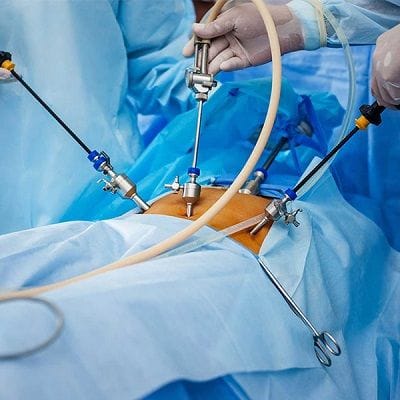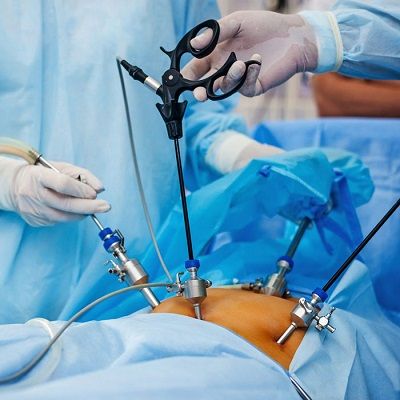
Obesity has a critical and multi-layered influence on people’s lives, addressing different parts of their physical, profound, and social prosperity. From an actual well-being point of view, stoutness is firmly connected to a large group of persistent circumstances, including coronary illness, diabetes, and hypertension, which can prompt decreased general well-being and future. On the emotional well-being front, weight frequently adds to melancholy, uneasiness, and low confidence, as people wrestle with cultural shame and self-perception concerns. This can additionally dissolve their personal satisfaction, prompting exhaustion, social disconnection, and decreased portability. The best option for treating obesity is Laparoscopic Surgery: Advantages and Disadvantages should be known by every singular opting for the procedure.
What Is It?
Laparoscopic Weight Loss Procedure in Dubai is a negligibly obtrusive medical procedure. It is a cutting-edge surgical strategy that includes performing tasks through little entry points (generally 0.5 to 1.5 centimeters) in the patient’s body. Not at all like traditional open medical procedure, which requires a huge entry point to get to and picture inside organs.
This procedure utilizes specific instruments and a thin, adaptable tube with a camera called a laparoscope. The laparoscope gives continuous superior-quality pictures of the surgical region, which are shown on a screen, permitting the specialist to carry out the technique with accuracy.
Techniques:
During the procedure, the specialist makes a few little entry points in the patient’s midsection or different regions of the body, contingent upon the surgical site. There are different types of laparoscopic surgery
Gastric banding :
Gastric Banding is a laparoscopic flexible gastric banding (LAGB) that helps in weight reduction medical procedures and intends to assist people with extreme obesity to lose weight by limiting how much food they can eat. The strategy includes setting an inflatable silicone band, known as a gastric band, around the upper piece of the stomach to make a little pocket. This pocket restricts how much food an individual can eat at one time, leading to a sensation of completion with more modest feasts and diminished general calorie consumption.
Mini Gastric Bypass:
It is a variety of conventional gastric bypass that intends to assist people with extreme obesity, shed pounds, and work on their general well-being. The strategy includes making a more modest stomach pocket and rerouting a part of the small digestive system to diminish food admission and supplement ingestion. During the medical procedure, the specialist first partitions the stomach to make a little pocket at the top, commonly around 1/tenth the size of the first stomach. This pocket confines how much food can be eaten, prompting a sensation of fullness with less food.
Duodenal Switch:
The duodenal switch is a complex and profoundly compelling weight reduction medical procedure intended for people with extreme obesity. It consolidates both prohibitive and malabsorptive parts to advance critical weight reduction and enhancements in obesity-related ailments. The medical procedure starts with a sleeve gastrectomy, in which roughly 80% of the stomach is for all time eliminated, leaving behind a more modest, banana-molded stomach pocket.
In the second phase of the strategy, the specialist reroutes the small digestive system. He then detaches the main part of the duodenum (the segment of the small digestive system nearest to the stomach) from the stomach and associates it with the lower piece of the small digestive system (ileum). This association shapes a more limited way for food to travel, diminishing supplement ingestion and calorie consumption.
Advantages:
This strategy is a minimally invasive yet uncomplicated procedure that can be useful in different bariatric surgeries. And help people to lose weight and improve their overall general health.
- Smaller incisions cause less postoperative discomfort.
- Better cosmesis and less scarring.
- Quicker recovery periods than with open surgery.
- Infections at the surgical site are less likely.
- Decrease the risk of blood loss throughout the surgery.
- Less time spent in the hospital or outpatient operations.
- Reduce dependence on painkillers.
- Patients can quickly resume their regular diets.
- Decrease the possibility of incisional hernia
- High-definition cameras improve visualization.
- Lessen the chance of some surgical complications
- Return to work and regular activities more quickly.
Disadvantages:
While this medical procedure offers various benefits, it is critical to know about likely impediments and constraints related to this insignificantly intrusive methodology. A portion of the disservices of laparoscopic medical procedure include
- Restricted surgical access because of smaller cuts.
- Longer operating times in some cases
- Expectation to learn and adapt for specialists to become capable.
- Equipment costs, including particular instruments and screens.
- Chance of injury to inner organs or veins.
- Not appropriate for every ailment or surgery.
- Inconvenience from carbon dioxide gas insufflation.
- Potential for port site confusions, like contamination or herniation.
- Higher general cost contrasted with a few open medical procedures.
Book A Consultation!
If you want detailed information about Laparoscopic Surgery: Advantages and Disadvantages. Then you can contact our doctors in Dynamic Clinic in Dubai. Only complete the consultation form given below, our team will contact you and schedule your appointment as soon as possible.










